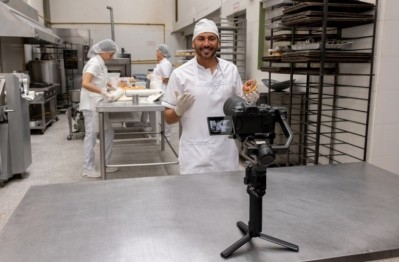Buying habits: The snacks are a’ changing

Most consumers habitually snack between meals. According to Mintel, over 80% of consumers in the UK, Germany and the US do so, with more than 90% of all Americans eating one to three snacks daily.
The snacks industry has transformed to meet the changing needs of snack-loving consumers – stepping up to produce a variety of option, from treats reminiscent of yesteryear to a gamut of convenient, health-focused, exotic-ingredient and brain-energizing options.
A snacking timeline
Humanity’s snack addiction began in the 1950s and 60s, when convenient, packaged snacks first appeared care of the family-marketed potato chip, pretzel and chocolate bar.
The 70s brought in ready-to-eat, microwaveable snacks like popcorn, and granola bars became a popular choice for the more health-conscious.
In Western economies, the snacks world boomed in the 80s: think flavored potato chips, savory snack mixes and individually packaged treats.
The 90s heralded a surfeit of lower-fat options like crackers and fruit snacks, while pre-packaged snack packs sold by convenience stores enabled a grab-and-go culture.
The 2000s turned snacks healthier still, with the focus on organic, natural and whole grain variations free of artificial additives and preservatives. Snacks once considered indulgent treats were reinvented to offer more nutritional value and functional snacking was embraced, bringing in a plethora of options like protein bars, probiotic yogurts and snacks fortified with vitamins and minerals.
A 2024 report by Innova revealed 60% of global consumers now say they eat better-for-you snacks at least once daily. And, according to the latest Harman Group survey, 59% of consumers are looking more often for low-sugar options, while another 42% say protein justifies their snacking habit.
That producers are answering these demands is evident in the fact that the healthy snacks market was worth $90.62bn in 2022.
The demand for convenience
While biodegradable, compostable and recyclable packaging options are becoming more prevalent, the demand for convenience has led to the popularity of single-serve packaging, which offers portion control and portability – ideal for time-poor professionals, students and parents. Convenience is a real driver of the snacking sector as, according to Frito-Lay’s US Snack Index, the general population makes ever less time to graze. In fact, the Index found the average American spares only 52 total minutes each day to prepare and eat meals.
We’re also integrating favorite snack products into meals; this is up 35% over previous years, particularly among Millennials and younger cohorts. These resourceful consumers – 55% of them anyway – say their favorite snack combinations are inspired by what is already in the pantry, while others exploit social media for ideas. In fact, videos of incorporating snacks as ingredients in recipes have become especially popular.
We know the pandemic expedited the shift towards online shopping, making it easier than ever for shoppers to order from the comfort of their home or though subscription services, where products and categories are tailored to specific dietary needs and preferences.
We’re also entering an era that has a greater focus on mental and emotional wellbeing and despite the greater focus on health, indulgent, mood-boosting snacks remain the biggest sellers. The Innova report found one in five US consumers claim to have increased their consumption of indulgent snacks over the past 12 months.
Inflation opportunities
The inflation-wracked post-pandemic years has severely pinched disposable income and with fewer expeditions to eat out, snack makers have grabbed the opportunity to deliver foodie experiences at home.
The world is getting smaller and traditional flavors from regions like Latin America, Asia and the Middle East is boosting the sector.
David Walsh, VP of Communications for SNAC International, told Bakery&Snacks that hot flavors are hot right now, “including different types of peppers like habanero and ghost pepper; ‘Blue Heat’ from Takis; chipotle adobo; and hot paired with artisanal cheeses.”
Another knock-on effect of the cost-of-living crisis observed by SNAC International is that instead of eating out when on the go, consumers are increasingly purchasing a snack and guzzling it during their commute or out-of-home activity.
“Our partners at Circana state that higher income individuals are gravitating toward food service and quick-serve restaurants, while lower income consumers are doing more shopping at convenience stores, dollar stores and mass supermarkets,” Walsh told us.
As consumer preferences continue to evolve, the snacks industry is without doubt a leader in innovation, motivating to provide treats that not only satisfy hunger but also align to specific demands.
For example, among the latest gamechangers, Walsh points to the snacks proclaiming to provide ‘intelligent energy’ – containing nootropics like theanine to boost mental performance; plant-based adaptogens to help manage stress and fatigue; and electrolytes to help with a variety of bodily functions.
“There have also been new releases of products using edamame varieties as well as mushrooms for immune/gut health and antioxidants,” he added, along with “innovation around snacks catering to the needs of specific athletes, such as bars using cashews to help with muscle soreness.”
This is a trend he expects to continue.
As flexible as always, the snacks industry is embracing change and setting the stage for a new era of snacking, be it through the use of functional ingredients, sustainable practices or cutting-edge technologies.
This drive will lead to a vibrant sector that is projected to grow at 28% year on year, more than doubling in value: from $256.26bn in 2023 to $559.26bn by 2028, according to FMCG Guru data.




















